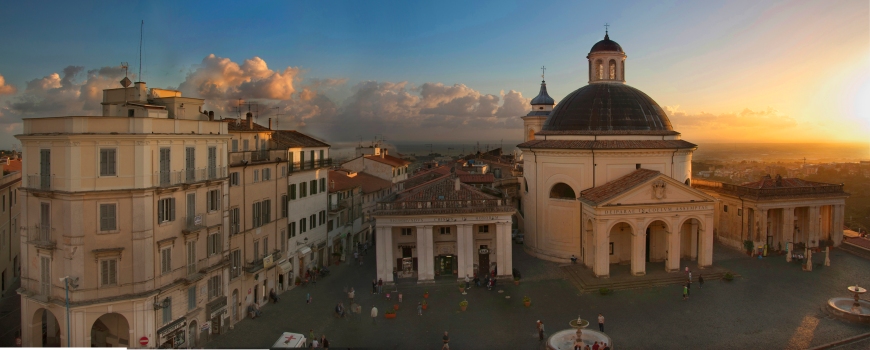The circular plan, the shape of the dome, the large circular windows and the lanterns resemble the architecture of the Roman Pantheon, which was probably due to Alexander VII’s desire to create a sort of Pantheon dedicated to the Virgin Mary at Ariccia.
Inside the church, above the entrance, can be admired the choir stalls and organ commissioned by Agostino Chigi (1753); the decorations in stucco of sixteen angels supporting wreaths by Antonio Raggi (Bernini’s pupil) dominate the cupola; the hexagonal coffering ceiling, tapering off as they progress upwards, cover the whole internal surface.
The apse is painted with masterpieces by Borgognone such as l‘Assunzione al cielo della Madonna (The Assumption of the Virgin Mary) that illustrates the Virgin Mary supported by angels with the apostles underneath; there are some noteworthy paintings in the chapels such as S. Tommaso da Villanova (St. Thomas of Villanova) by Raffaele Vannini, La Sacra Famiglia (The Sacred Family) by Ludovico Gimignani, S. Antonio da Padova (St. Antonio of Padua) by Giacinto Gimignani, S. Fransesco di Sales (St. Francis de Sales) by Taruffi, the SS. Trinità with Agostino (The Holy Trinity with Agustin) by Bernardino Mei and S. Rocco (St. Rocco) by Alessandro Mattie.
The two adjoining outside buildings, one the Governor’s country house and the other the Ministers country house, are joined at the rear by an exedra securing the structure.


 Visit Castelli Romani
Visit Castelli Romani 

